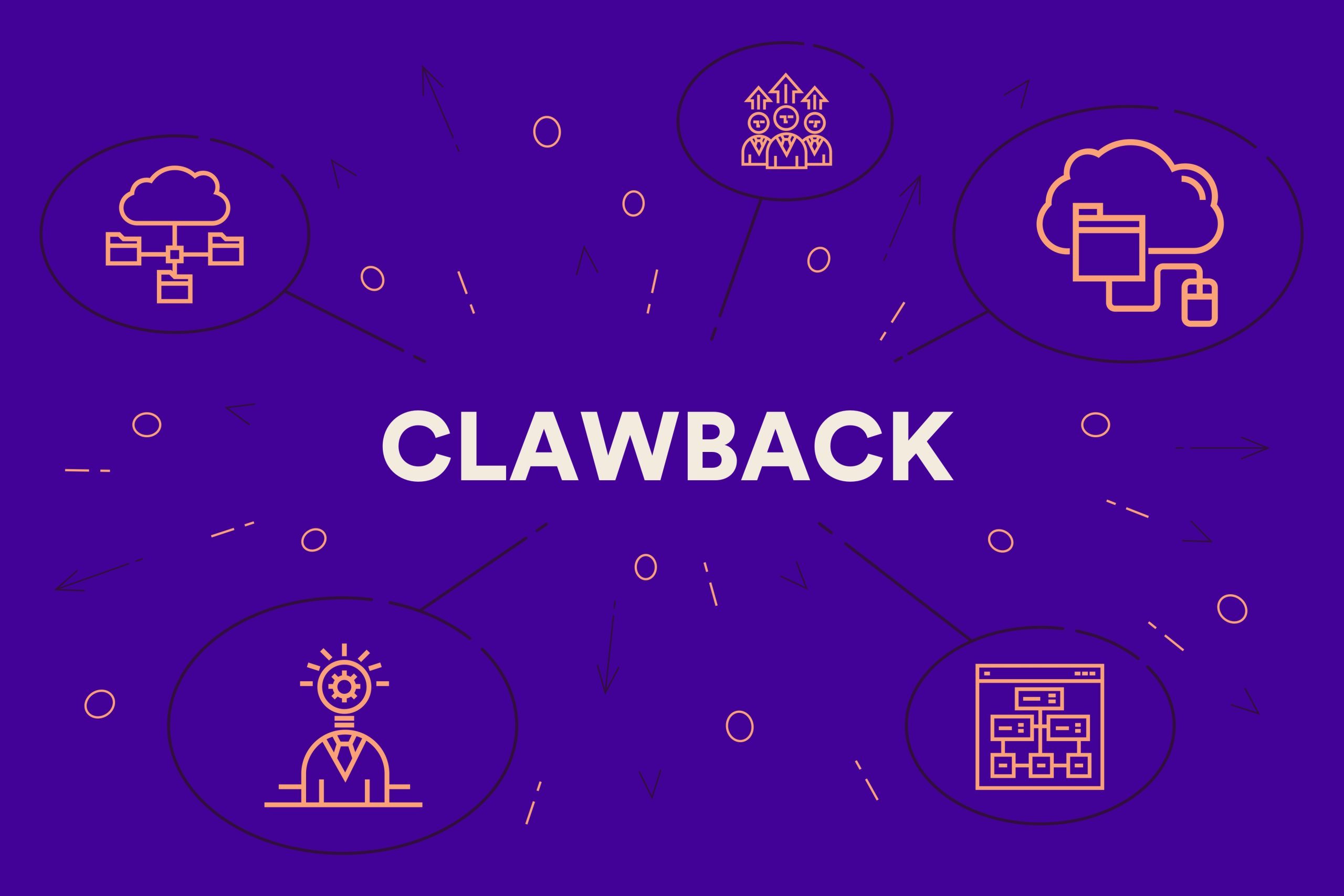As hiring confidence increases in the post-pandemic landscape, the recruitment industry looks set to enjoy a profitable (if competitive) year. Supply chain disruption and global labor shortages mean that expert recruitment services will be in high demand – and if this uptick in business is to be enjoyed to its fullest profitable potential, then efficiency within internal management will become increasingly important.
For recruitment agencies, one of the biggest challenges relating to the commission-based payment models that they operate is clawback. The act of reclaiming commission payments made on a hire that has terminated before reaching a contractual threshold, clawback clauses are commonplace within most recruiter employment contracts. However, this doesn’t mean that they’re always handled in the most effective and efficient manner!
In this article, we’ll explore five ways that you can optimize your recruitment commission clawback process – happier recruiters, happier clients, happier accounting team – everyone wins here.
1. Minimize The Need For Clawbacks
Firstly, the age old adage applies here – prevention is better than cure! If you’re looking to streamline your clawback process, think about the ways in which you can create a culture (and commission structure) that reduces the frequency of clawbacks being needed in the first instance.
If you’re looking for more information on how to achieve a truly efficient recruitment commission structure, you might like to refer to our previous article covering precisely this topic – How To Create An Impactful Recruitment Commission Structure. Key to your success when it comes to minimizing the need for clawbacks will be incentivizing the right approaches to recruitment, and creating a culture that reflects your core business goals and values when it comes to finding the right candidates for the right roles.
Think critically about what practices or incentives could be unintentionally causing recruiters to prioritize filing roles quickly over filling roles well. Keep lines of communication open at all times, and learn from your recruiters’ reported experiences. If you’re managing your recruitment commission effectively, you should also be able to dig into the data and take note of any patterns emerging around clawback.
2. Track Improvements To Your Clawback Rates
Next up, it’s time to consider tracking. You can’t improve what you don’t measure, and if you’re serious about improving your procedures around clawback, it will pay dividends to begin tracking clawback as a key metric. Remember, you’re not using this insight as a measure of “how well our our recruiters doing” and instead seeing it as a measure of the agency’s own success – what measures are working? What changes or shifted incentives have made a tangible impact to the rate at which clawbacks are occurring.
Again, it’s a great idea to actively talk to your recruiters here – where are they seeing success? What would help them most in terms of the assistance or back up they might need? Ultimately, no one wants clawbacks – they’re a mark of a service that’s fallen short of contractual obligation. Showing your recruiters (and clients) that you’re invested in making noticeable improvements here can go a long way towards building up levels of trust, loyalty and ongoing engagement.
3. Think About Your Payment Cadence
Consider the way that your clawbacks are calculated and charged. Would a longer period of earning (i.e. quarterly) be advantageous here? In some cases, reducing the “rush” of trying to shoehorn more candidates into roles within monthly deadlines can have a beneficial impact.
If you’re tracking your clawback rates, a longer payment period also gives you a bigger body of data to examine progress (and hopefully improvement) over time. You might well find that you’re able to pick up on more defined or well-established changes than in the case of a month by month view. Additionally, a longer payment period also means that you’ll have longer to identify and amend incorrect reporting that might have led to overpayment in the first instance.
Of course, there are other factors that will also impact the ideal payment cycle, and it’s important to remain mindful of these – asking recruiters to wait too long for payment on positions filled for example may lead them to feel that your incentive program is less “responsive.”
4. Minimize Errors And Improve Transparency Through Better Commission Management
Clear communication, tracking and the accuracy of your data input can also go a long way to helping keep your clawback procedures precise and effective. If you’re operating at any kind of scale, then automating your commission management process with a software based solution such as Commissionly can be a huge timesaver, as well as removing the impact of any human error.
Commissionly can make these calculations easier for you and your team by applying clawback automatically, via recalculated commissions. This means that when an opportunity is marked as clawback, the system will automatically recalculate the commission payment for the period in which the original payment was made (including tiers.) The current period will then be adjusted to reflect the overpaid commission.
Another benefit here is the “self service” access to their commission data that your recruiters have, with the ability to easily access and review their commission payments at any time. Build trust with your recruiters as your commission payments are handled with ease and accuracy – no “nasty surprises” due to calculation errors.
5. Work with a system that allows you control and flexibility
In some instances, you might prefer to have more manual control of your clawback process. Commissionly can help in this case too, with functionality that lets the user build commission matrixes which can apply variable commission rates based on products or other factors to each sale, as opposed to a fixed or tiered % for all items in the sale.
Additionally, Commissionly offers a range of powerful CRM integrations, linking with Bullhorn and Crelate. This helps extend your functionality and enables a fuller leverage of your data for the ongoing improvement of workflows around commission calculations and payment. By working in conjunction with your existing tech stack and internal processes, Commissionly’s recruitment commission software can help to polish and refine your workflows in a way that makes sense for your unique business requirements.
Get Ready For An Easier Recruitment Commission Clawback Process
A solid clawback procedure is essential for any recruitment agency dealing with a commission-based workforce. When handled with efficiency and transparency, everyone wins. Incremental improvements made to this workflow over time – especially within the realm of automation – will have ongoing operational benefits (saving both time and money) but beyond that, carry the potential to bring dramatic improvements to recruiter relationships and retention.




